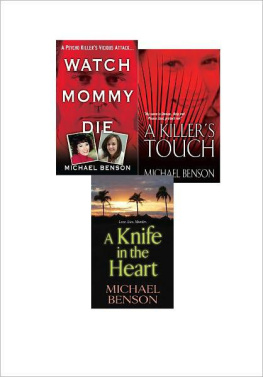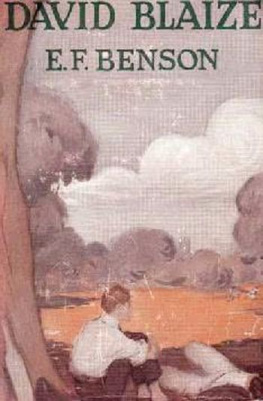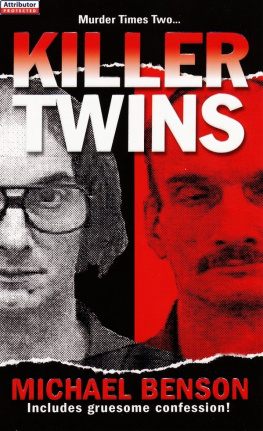Benson-Allot - Killer tapes and shattered screens: video spectatorship from VHS to file sharing
Here you can read online Benson-Allot - Killer tapes and shattered screens: video spectatorship from VHS to file sharing full text of the book (entire story) in english for free. Download pdf and epub, get meaning, cover and reviews about this ebook. City: Berkeley, year: 2014, publisher: University of California Press, genre: Romance novel. Description of the work, (preface) as well as reviews are available. Best literature library LitArk.com created for fans of good reading and offers a wide selection of genres:
Romance novel
Science fiction
Adventure
Detective
Science
History
Home and family
Prose
Art
Politics
Computer
Non-fiction
Religion
Business
Children
Humor
Choose a favorite category and find really read worthwhile books. Enjoy immersion in the world of imagination, feel the emotions of the characters or learn something new for yourself, make an fascinating discovery.
- Book:Killer tapes and shattered screens: video spectatorship from VHS to file sharing
- Author:
- Publisher:University of California Press
- Genre:
- Year:2014
- City:Berkeley
- Rating:5 / 5
- Favourites:Add to favourites
- Your mark:
- 100
- 1
- 2
- 3
- 4
- 5
Killer tapes and shattered screens: video spectatorship from VHS to file sharing: summary, description and annotation
We offer to read an annotation, description, summary or preface (depends on what the author of the book "Killer tapes and shattered screens: video spectatorship from VHS to file sharing" wrote himself). If you haven't found the necessary information about the book — write in the comments, we will try to find it.
Benson-Allot: author's other books
Who wrote Killer tapes and shattered screens: video spectatorship from VHS to file sharing? Find out the surname, the name of the author of the book and a list of all author's works by series.
Killer tapes and shattered screens: video spectatorship from VHS to file sharing — read online for free the complete book (whole text) full work
Below is the text of the book, divided by pages. System saving the place of the last page read, allows you to conveniently read the book "Killer tapes and shattered screens: video spectatorship from VHS to file sharing" online for free, without having to search again every time where you left off. Put a bookmark, and you can go to the page where you finished reading at any time.
Font size:
Interval:
Bookmark:

KILLER TAPES AND SHATTERED SCREENS
Killer Tapes and
Shattered Screens
Video Spectatorship from VHS to File Sharing
CAETLIN BENSON-ALLOTT

UNIVERSITY OF CALIFORNIA PRESS
BerkeleyLos AngelesLondon
University of California Press, one of the most distinguished university presses in the United States, enriches lives around the world by advancing scholarship in the humanities, social sciences, and natural sciences. Its activities are supported by the UC Press Foundation and by philanthropic contributions from individuals and institutions. For more information, visit www.ucpress.edu.
University of California Press
Berkeley and Los Angeles, California
University of California Press, Ltd.
London, England
2013 by The Regents of the University of California
Library of Congress Cataloging-in-Publication Data
Benson-Allott, Caetlin Anne.
Killer tapes and shattered screens:video spectatorship from VHS to file sharing / Caetlin Benson-Allott.
p. cm.
Includes bibliographical references and index.
ISBN 978-0-520-27510-2 (cloth : alk. paper)
ISBN 978-0-520-27512-6 (pbk. : alk. paper)
eISBN 9780520954496
1. Technology in motion pictures. 2. Cinematography Technological innovations. 3. Horror filmsHistory and criticism. 4. Motion picture audiences. 5. Video recordingsProduction and directionData processing. 6. Digital videoProduction and directionData processing. 7. Video recordings industry. I. Title.
PN 1995.9. T 43 B 462013
791.43656dc23
2012038612
Manufactured in the United States of America
22 21 20 19 18 17 16 15 14 13
10 9 8 7 6 5 4 3 2 1
In keeping with a commitment to support environmentally responsible and sustainable printing practices, UC Press has printed this book on Rolland Enviro100, a 100% post-consumer fiber paper that is FSC certified, deinked, processed chlorine-free, and manufactured with renewable biogas energy. It is acid-free and EcoLogo certified.
For my mother, Kathryn Joan Allott (19422004)
Contents
Illustrations
Acknowledgments
It takes an institution to produce a dissertation; it takes many institutions, innumerable friends, and much of their patience to produce a book.
I am immensely grateful for the support of Cornell University and the amazing advisers I found there. Ellis Hanson taught me about the intense joys of film theory and rigorous feedback. Ellis was not just a chair but a role model and a champion. Amy Villarejo kept asking for more until I figured out how to deliver it; her encouragement and friendship have shown me the kind of professor I want to be. Eric Cheyfitz shared my enthusiasm for low genres, high theory, and the political potential of both. Jonathan Culler generously shared his time and insight; he even agreed to work through Infinite Jest with me against his better judgment. And finally, Masha Raskolnikov was a superlative mentor and confidant. Masha was never part of my dissertation committee, but she was there for every crisis and victory. She still is.
This project was made possible with fellowships from the Graduate School and Feminist, Gender, and Sexuality Studies Program of Cornell University, as well as research grants from Cornells Graduate School, American Studies Program, and Rose Goldsen Archive of New Media Art. While at the University of California, Santa Cruz, I received grant support from the Senate Committee on Faculty Research, along with the feedback and fellowship of the wonderful Film and Media Studies Department. I am especially grateful for the sage counsel and warm friendship of my colleagues Irene Gustafson, Irene Lustzig, and Shelley Stamp. Neda Atanasoski, Mayanthi Fernando, and Megan Moodie-Brasoveaunu also sustained me and my research during my time among the banana slugs. Amelie Hastie took me under her wing and made a professor out of a terrified graduate student. I once told Amelie I would not be here if it were not for her. Neither would this book.
More recently, the English Department and Graduate School of Georgetown University provided research grants and a Junior Faculty Research Fellowship that enabled me to finish this manuscript. My colleagues in the English Department have revitalized my appreciation for interdisciplinary conversation; I especially wish to acknowledge Dana Luciano, Ricardo Ortiz, Henry Schwartz, and Kathryn Temple. Our Junior Faculty Writing Group gave me the collegiality I needed to keep my fingers on the keyboard; thank you Jennifer Fink, Nathan Hensley, Brian Hochman, Samantha Pinto, Daniel Shore, and Mimi Yiu. I also want to express my gratitude to the faculty and staff of the Film and Media Studies Program; the students of Multimedia Spectatorships; and my research assistant, Ryan Walter. Georgetown facilitated my entry into the DC Queer Studies Reading Group, which makes the district feel like a home. Carla Marcantonio and Kristen Bergen, in particular, make capital life a joy. And Matthew Tinkcom needs an acknowledgment all his own: thank you, Matthew, for reading, commenting, encouraging, and reminding me that professing is just a job, but a great job.
I am eternally grateful to the generous souls who read and reread large chunks of this manuscript over the past six years, including many of the aforementioned and Jacob Brogan, Paul Fleig, Daniel Herbert, Jen Malkowski, Hugh Manon, Lisa Patti, and Celeste Pietrusza. Various chapters were also improved by insights from Larry Andrews, Will Brooker, John Thornton Caldwell, Nick Davis, Max Dawson, Paul Dergerabedian, Anne Friedberg, Theresa Geller, Amy Herzog, Chris Holmlund, Alexandra Keller, Chuck Kleinans, L. S. Kim, Marcia Landy, Julia Lesage, Peter Limbrick, Paul McDonald, Cathy and Corey Mifsud, Laura Mulvey, Tim Murray, Chris Olivia, Anthony Reed, Jeffrey Sconce, Vivian Sobchack, Lynn Spigel, Yiman Wang, Frederick Wasser, Kristen Whissel, Rob White, Linda Williams, and Patricia Zimmerman. Portions of chapters 3 and 4 were previously published in Jump Cut and Film Quarterly, and I wish to thank their anonymous readers for invaluable feedback. I was privileged to present works-in-progress from this project at San Francisco State University; Smith College; the University of Pittsburgh; and the University of California, Berkeley, and I want to reiterate my thanks to the generous audiences I met there. I would also like to thank the owners and staff of Revolution Video, Lincoln Video, Five Star Video, Collegetown Video, and Westside Video. Without you this project would have never begun.
Mary Francis has been the best editor I could have imagined; her critical acumen and consistent encouragement always inspire me to rise to the challenge. Kim Hogeland and Rachel Berchten have also been invaluable. Mary found two wonderful readers for my manuscript, but Lucas Hilderbrand was the greatest interlocutor I could have asked for. I have heard it said that one should pick ones research projects so as to enter into stimulating conversations with smart colleagues. Not only is Lucas a wonderful writer; he is a generous scholar who nurtures colleagues and ideas equally. I have been truly blessed by his generous suggestions and close attention to detail. He knows I cannot thank him enough.
My family has supported this project in ways too myriad to mention. My mother trained me from a young age to appreciate the wonders of Movie Night, and my father taught me the value of returning to an important text again and again. My sister has been my constant viewing companion since 1985; without her I would be lost. Patricia and Earl Silbert have been so much more than an aunt and an uncle, and I am forever grateful. And then there are the family who are also friends and those friends who have become family: thank you all!
Next pageFont size:
Interval:
Bookmark:
Similar books «Killer tapes and shattered screens: video spectatorship from VHS to file sharing»
Look at similar books to Killer tapes and shattered screens: video spectatorship from VHS to file sharing. We have selected literature similar in name and meaning in the hope of providing readers with more options to find new, interesting, not yet read works.
Discussion, reviews of the book Killer tapes and shattered screens: video spectatorship from VHS to file sharing and just readers' own opinions. Leave your comments, write what you think about the work, its meaning or the main characters. Specify what exactly you liked and what you didn't like, and why you think so.

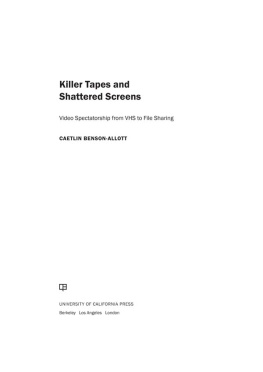
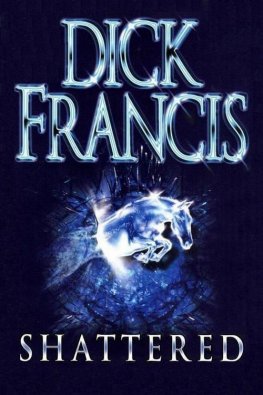
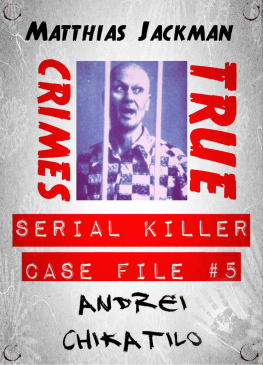
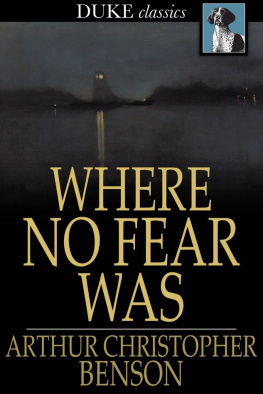
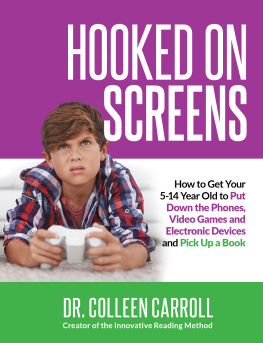
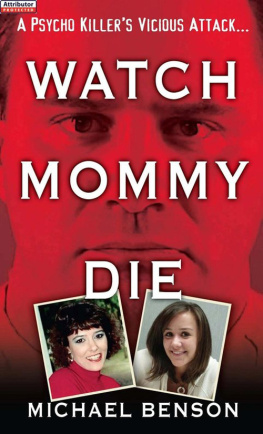
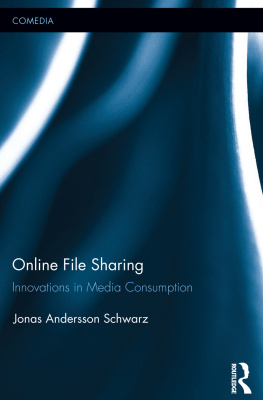
![Robert Hugh Benson [Benson - Robert Hugh Benson Collection [11 Books]](/uploads/posts/book/139831/thumbs/robert-hugh-benson-benson-robert-hugh-benson.jpg)
